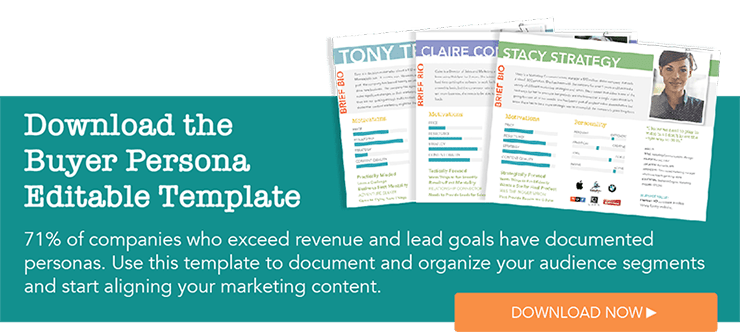The 5 Fundamentals of Inbound Marketing
The fundamentals of inbound marketing just might push you to retire your old marketing ways and turn over a new leaf. Inbound marketing is different...
4 min read
 Amanda Weldon
:
Jun 8, 2022 11:57:01 AM
Amanda Weldon
:
Jun 8, 2022 11:57:01 AM

How do you typically make a purchasing decision? You likely go to Google, type in phrases, questions, or even specific product or service names. You see what information is there to help you either find what you’re looking for, make product comparisons, or make a purchasing decision. The same can be said for industrial companies like original equipment manufacturers (OEMs). According to CSO Insights, “70% of buyers fully define their needs on their own before engaging with a sales representative,” which means it’s vital to have the information your prospects might be looking for easily available online.
So how do you as an industrial business increase online reach to ensure that your prospects find you and not your competitor? In short: Develop content. It sounds easy, right? But, it’s actually much more complex than one might think. There’s a method to the madness of this content marketing and inbound marketing approach and a few steps one must follow in order to get started.
To get in the mindset of your ideal customer and who you are looking to attract more of, you must develop personas. Persona development relies on market research, including real conversations with current customers who represent the base of who you want to attract. Often, you will have more than one persona. In the manufacturing industry, you may have one engineer, one buyer, and one owner, for example. You might even have an ‘ideal employee’ as a persona and use online videos, blogs, and more to attract the talent you need. By getting to the root of your audiences’ fears, pain points, motivators, frustrations, and more, you get a good idea of what they care about and why.
Does your website hinder people from getting in touch with you? You might instinctually say, “Of course not!” but how do you really know? There are several ways to approach this. First, run your URL through a free website grader tool. Be aware of whether you’re mobile-friendly or not (over half of website visits in 2021 came from mobile versus desktop), 404 errors, and site speed. All of these and more contribute to your overall ‘website score.’ A higher score is a better indicator that your website is set-up in a way that will support your inbound marketing efforts of attracting new visitors by getting found online. If you want to take it a step further, you can even do blind studies to see how easy or not your website is to navigate to ensure you’re not offering a less than ideal experience.
Once you know your website is running in a way that does not deter your efforts of bringing people to your website, it’s time to start writing content. In the beginning, that especially means blogging. There are a few things you’ll want to consider when writing blog content. First, make sure that you keep in mind SEO by using a tool such as Ahrefs or SEM Rush to explore what terms, phrases, and questions people are searching for online. You’ll want to pay attention to both the volume and the difficulty score. Additionally, keep search intent in mind. For example, if you sell industrial or off-road brakes but you’re researching the keyword ‘brake’ you will likely see a very high search volume. The problem with this keyword is that you’re going to attract a large number of consumers who are looking for vehicular brakes - not in line with your industrial persona.
Search viability, search intent, and writing for your personas is the heart of blogging. Next, you’ll want to establish a publishing cadence that you feel confident you can maintain. Google favors websites that publish new, relevant content on a consistent basis.
Finally, the most important rule is to keep content educational and/or informational. Google doesn’t favor self-serving blogs or blogs that are obviously trying to sell to your audience. Instead, keep in mind what stage of the sales cycle your prospect is in - awareness, consideration, or decision - and write content that meets them where they are. If you’re just starting out and your traffic is low, your main focus will likely be developing awareness-stage content designed for your target personas until you reach a steady flow of online visitors.
Do you make it easy for your prospect to figure out their next step? For example, are there calls to action (CTAs) within and at the bottom of your blog? A call to action might be access to a helpful piece of content that requires the visitor to share some of their information and data with you. For example, this could be a ‘guide to efficient components for a conveyor system’ or ‘a component sizing calculator’ - whatever would be helpful and appealing in conjunction with the content you’re discussing within the blog. Think about what you already use as an easy way to develop a call to action.
Again, when writing content for a specific buyer, keep in mind where your prospect is in their sales cycle. If the content is in the awareness stage (top of the sale funnel), you’ll likely want a lower barrier of entry/conversion such as name and email. If it is in the consideration (middle of the sales funnel) stage, you may want to ask for another valuable piece of information your team needs, like their company name. The main goal here is to gather their contact information so you can nurture them down the sales funnel into a sales-qualified lead - a potential customer that’s ready for the sales team to reach out to.
This process is called ‘lead nurturing.’ For more information on developing an effective lead nurturing strategy, check out this blog.
Getting in touch with a third party or agency that is well-versed in inbound marketing strategies specifically for manufacturers or industrial businesses is a good place to start. Pay attention to what questions they ask you, such as:
Don’t forget to also ask them about their experience working with manufacturers or industrial businesses. Ask them what challenges they’ve encountered working specifically with these businesses - such as supply chain issues, tariffs that lead to increased prices, growing competition with big box stores like Grainger and Amazon, and more. Their answers will give you a good idea of how well-versed they are, and how effective they will be in helping you reach your target audiences for your specific industry.
Remember – when you arm your prospect with the information they are looking for and make it easy for them to get to know you, you will build trust and become a go-to resource within your industry. Of course, this has many added benefits in the short and long term, especially when it comes to your sales cycle. Because when your prospect knows you, trusts you, and has already done their research, you will shorten the sales cycle and ensure it will be a long, fruitful, and mutually beneficial relationship!

The fundamentals of inbound marketing just might push you to retire your old marketing ways and turn over a new leaf. Inbound marketing is different...

If you’re implementing one part of HubSpot, no problem. The CMS? It’s fabulous, a world class “WYSIWYG” tool that makes it simple to post a blog the...

Gone are the days of “traditional” marketing and advertising strategies. Sharing campaigns across radio, TV, and print has become nearly obsolete–and...